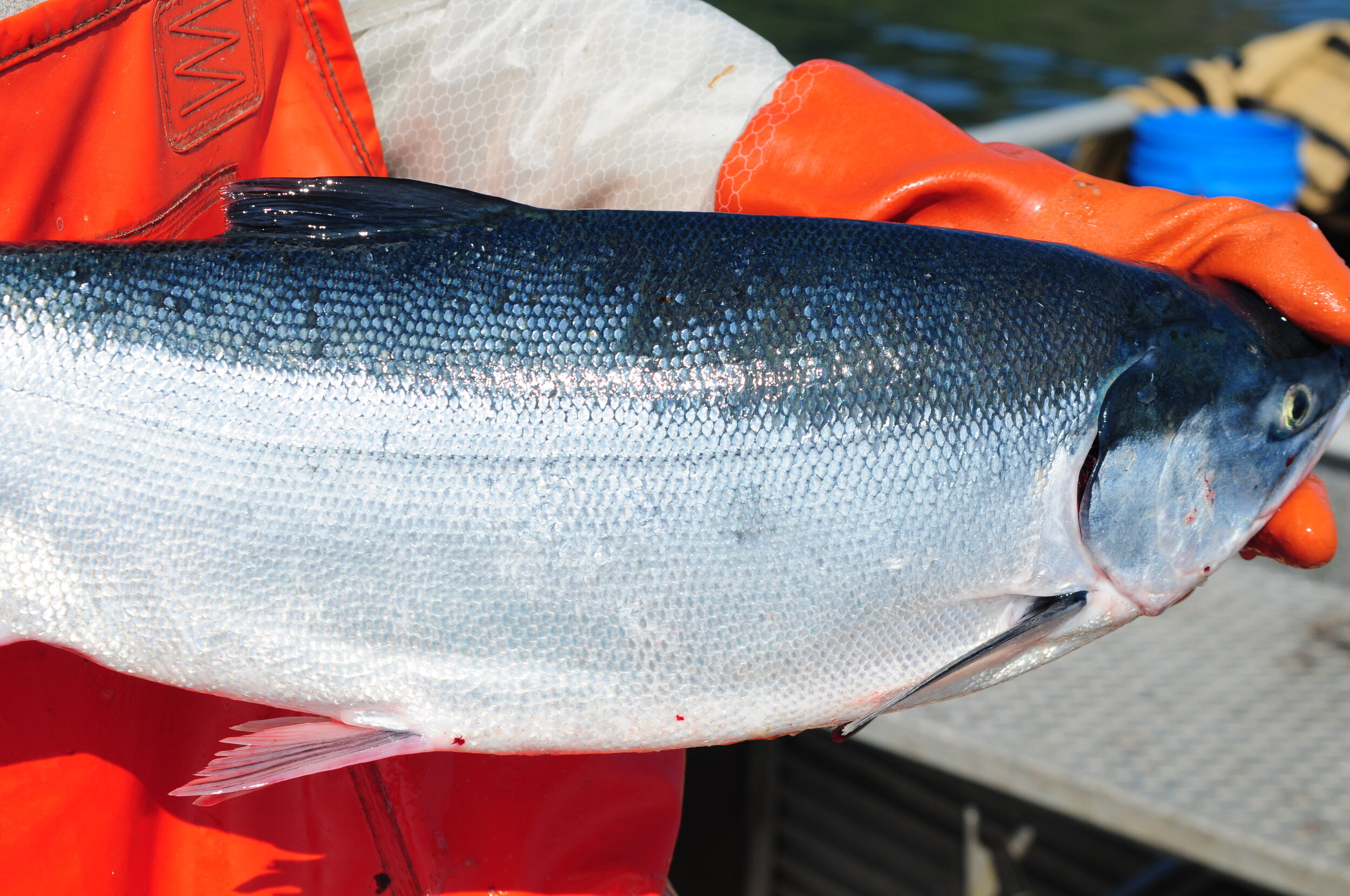Different Species: Distinguishing Sockeye From Coho
As skippers, one of the many things we teach new crew members, aside from how to work on the water, how not to get their fingers crushed between boats, how to pick fish, and how to tie the basic knots we use, is how to visually tell all five wild salmon species we catch apart from each other, noticing scale size, eye size, tail shape, and markings such as spots, silver, or bars on their bodies, backs, and tails.
Our job as direct marketers of our own fish also involves educating on the nuances between the two species we sell, namely our sockeye and coho. Instead of focusing on the external markings of a whole fish, we get to delve deeper into the heart of the salmon, focusing our attention on the qualities of its beautiful fillets.
Immediately, the difference in color strikes our eye. Sockeye is the most bright orangey red salmon, made that way naturally by the little krill that makes up the bulk of the zooplankton it eats. Coho has a gentler rosy hue which is caused by its diet of small fishes. When the fillets are thawed, they only get deeper in color. In our opinion, both are a beautiful sunrise on our plates!
The life cycle of each species is very different, and we think that how they grow and feed absolutely affects the texture of the fillets. Sockeye are born in lakes and spend from one to two years as juveniles in fresh water before heading out to the open ocean to continue growing until they are five years old, fully mature, and ready to return to spawn. The sockeye we catch are about five and a half pounds at the end of their adult lives. In both fresh and salt water, the sockeye eats zooplankton, unique among salmon species. Its long life compared to other species, diet, and thousands of miles of swimming gives it the nice firm flesh it is prized for. Due to its brilliant color and unmatched firmness, sockeye is prized as a sushi and sashimi fish.
In contrast to the long-lived sockeye, coho is fully mature at two years of age, ready to return to spawn, after having spent its life chasing down and gobbling as many little fish as it can while roving the salty seas (it leaves its fresh water natal stream at only a few months of age). Amazingly, it grows to eight to twelve pounds, or much more, in just that short amount of time. It is an incredibly athletic and strong fish, one of our favorite to catch. The coho fillets are more moist and slightly more delicate than sockeye but still beautifully muscled. This is our favorite salmon to smoke because its flesh doesn’t dry out too much. However, when cooked we also greatly enjoy it.
Nutritionally, both wild sockeye and wild coho are outstanding choices, but there are differences between the two. Omega-3s are one of the great health benefits of eating wild salmon, and it’s interesting to note that coho has 900 mg per 3 ounce serving while sockeye has 750 mg. The tables are turned when it comes to protein, though. Sockeye comes out on top at 23 grams of protein per 3 ounces, while coho has 20 grams. Each has slightly differing amounts of other vitamins and nutrients. We love this handy little chart of nutritional information for all of Alaska’s wild salmon species, found at Alaska Seafood.org.
Blindfolded, we have to report that, by taste alone, we sometimes have a hard time telling sockeye and coho apart if they’re cooked exactly the same. Partly this is because we gut our coho right away to prevent belly burn and mushiness. It keeps the fillets in pristine condition. In our view, the taste of both fillets is superb - clean and ocean-fresh - and we’d be struggling to come up with a definitive description of difference according to our palates alone (ignoring visuals and textures). We don’t want to make something up or parrot what can be found online. The seasonings and recipes used to cook the fish have much more of an effect on the flavor than the difference in species. Some customers have told us they have strong preferences for one or the other, but it seems to us that it’s a matter of individual taste - there’s no across-the-board agreement.
So why, then, do we even bother to offer both species? The wild Alaska salmon we catch are varied and bountiful and we want to share a glimpse of the spectrum. We want to offer a choice of wild salmon and price point. Let us know what YOU think!
-Tollef and Adelia







